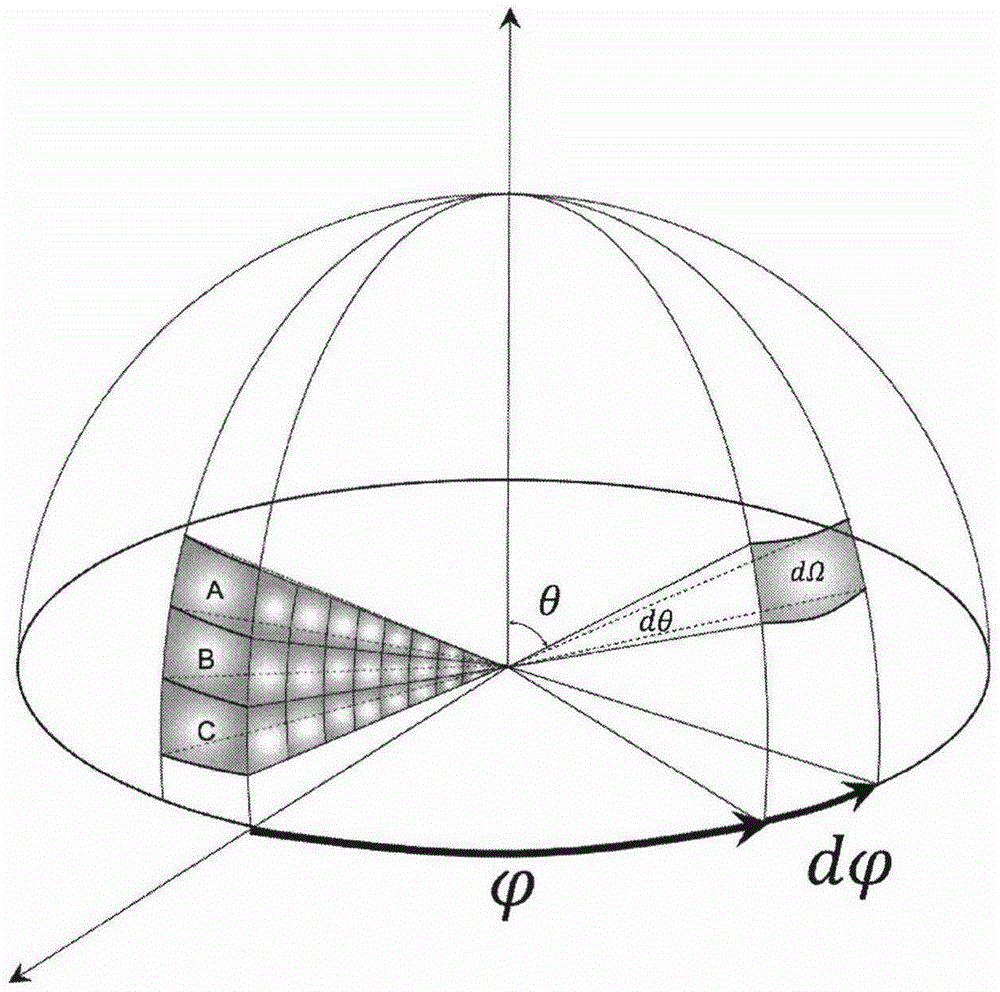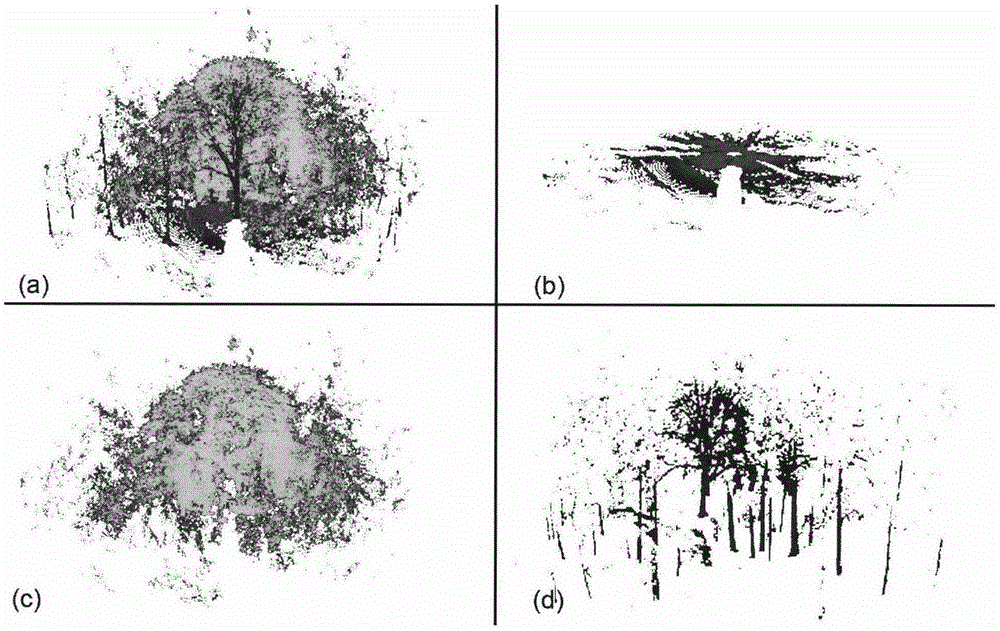Method for estimating forest leaf-area index based on point cloud hemisphere slice
A technology of leaf area index and area index, applied in calculation, image data processing, computer components, etc., can solve problems such as non-photosynthetic part and photosynthetic tissue cannot be distinguished, uncertainty, etc.
- Summary
- Abstract
- Description
- Claims
- Application Information
AI Technical Summary
Problems solved by technology
Method used
Image
Examples
Embodiment Construction
[0055] The present invention is further explained by example below:
[0056] 1. Taking the Washington Botanical Garden next to the University of Washington in Seattle as the research object, the terrain height ranges from 10m to 48.47m, and the slope changes less than 15%. 30 sample plots were selected, and the range of effective leaf area index was 0.59-6.69. According to the measured LAIe values, the 30 sample plots were divided into three categories: low (LAIe: 0-2), medium (LAIe: 2-3.2), and high (LAIe: 3.6-6.4). There are about 5-17 trees in each quadrat, and the diameter at breast height is 18-56cm. The parameters of the ground 3D laser scanner LeicaScanStation2 used are shown in Table 1:
[0057] Table 1 Parameters of 3D laser scanner LeicaScanStation2
[0058]
[0059]
[0060] 2. According to the step (2) of the technical plan, the ground laser point cloud data of forest quadrats are divided into three categories point by point: bare land, photosynthetic cano...
PUM
 Login to View More
Login to View More Abstract
Description
Claims
Application Information
 Login to View More
Login to View More - R&D
- Intellectual Property
- Life Sciences
- Materials
- Tech Scout
- Unparalleled Data Quality
- Higher Quality Content
- 60% Fewer Hallucinations
Browse by: Latest US Patents, China's latest patents, Technical Efficacy Thesaurus, Application Domain, Technology Topic, Popular Technical Reports.
© 2025 PatSnap. All rights reserved.Legal|Privacy policy|Modern Slavery Act Transparency Statement|Sitemap|About US| Contact US: help@patsnap.com



